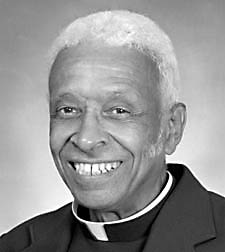
Father Jerome LeDoux, SVD,
Reflections on Life
By Father Jerome LeDoux, SVD
Imagine any engine running nonstop day and night for 88 years. Human ingenuity has not figured out a way to make an engine capable of running nonstop and efficiently more than a small fraction of that. Our marvelous heart never rests, unless we count the slight hesitation between the systole-diastole of its beats. The size of one’s fist, our heart is the muscle from which all other muscles can learn.
Yes, our heart does splendid work for many decades, unless it is disabled by some congenital defect, partially incapacitated by an accident or disease, or at length worn down by the inexorable advance of old age. In my case, my great cardiac motor has been slowed by nearly 89 years of constant use and calcium buildup on the aorta valve cusps that causes aortic stenosis, a narrowing that keeps the valve from fully opening or closing. This condition reduces blood flow to the body and makes the heart work harder. Since overwork weakens the heart, my cardiologist, Dr. David Homan, asked, “Do you have chest pain, fatigue or shortness of breath?”
When I responded in the negative, he broached the subject of aortic valve replacement. “Your lack of symptoms indicates that you may not need an aortic valve replacement now, but a small procedure (stent) can forestall your need for a replacement in the near future. I recommend that you have such a procedure now.”
Dr. Homan scheduled me for a right heart catheter to explore for blockage. If there was blockage, he would install a stent. He would also do a venogram to determine whether there was a blockage in my leg veins, since there is leg swelling. If there was blockage, he would install a stent there also.
Ordered to abstain from all food and drink after Thursday midnight, to shower before my CIS procedure Friday morning, and to be prepared to stay in the hospital either eight hours if no stents have been installed, or overnight if stents have been installed, I was left to get myself together for the occasion.
I arrived at the main desk Friday morning and within minutes, I was donning a repulsive hospital gown. A congenial nurse came in to do vampire work. She tried my left arm, but failed to draw blood. After five minutes, she switched to my right arm. I have fairly sizable veins, but they kept rolling and dodging. So the rattled nurse switched back to my left arm after some minutes. Third verse, same as the first. Predictably, she switched back to my right arm and finally drew some precious blood. She breathed a sigh of relief. So did I.
Unaccustomed to taking any chemicals at all, “the medicine to help you relax” knocked me out cold. I never even knew that Dr. Homan had come and gone.
I thought that I would have surgery done on my aortic valve at 10:45 Tuesday morning, November 13. But, to my surprise, when I called Dr. Victor Tedesco’s office in Lafayette the morning before to learn whether I had to fast, etc. in preparation for surgery, I heard the surprising words from the lips of the receptionist, “You don’t have to do anything. This will be only a consultation with Dr. Tedesco to discuss X-ray artery photos and schedule a date for surgery.”
Ushered into a large office room on November 13, I began to fire Italian at him Dr. Tedesco. I guessed correctly. Of Italian descent, although Tedesco is the Italian word for German, we threw some rudimentary Italian back and forth at each other.
Getting down to business, he said that he had studied the artery X-ray photos.
In the left side of the heart, the left anterior descending artery (LAD), aka the widow maker, supplies with blood the entire front wall of the heart and much of the side wall. A medium or total blockage of the beginning of the LAD can be a widow maker. The main artery supplies blood to the LAD and the left circumflex. A major blockage there is the mother of all widow makers, warranting timely double bypass surgery.
Weighing my two blockages, Dr. Tedesco and I scheduled surgery for December 12.
“God is love, and all who abide in love abide in God and God in them.” (1 John 4:16))
(Father Jerome LeDoux, SVD, has written “Reflections on Life since 1969. We will update his condition as soon as we receive word.)

